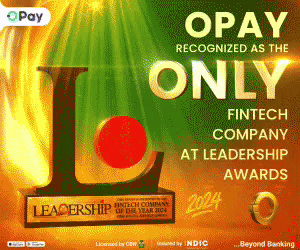In this exclusive interview with Nairametrics, the Chef Executive Officer (CEO) of Extreme Mutual Technique, Bome Ojoboh, talks about why the solar energy sub-sector could be ready for mass solar adoption following the removal of fuel subsidy.
He also touches on other important issues relating to the renewable energy sector. Enjoy the conversation.
Excerpts…
NAIRAMETRICS: Are upstream and downstream renewable energy players ready for the upsurge of solar technology adoption after fuel subsidy is removed? Why?
Bome Ojoboh: I can say we are; however, the truth remains that the government needs to play a vital role by actively investing in the renewable power sector by encouraging local manufacturing of solar panels, inverters and batteries. Our biggest expense is the importation of these products and the challenges around sourcing forex has thinned out our margins significantly.
NAIRAMETRICS: What are solar-powered inverters?
Bome Ojoboh: Solar-powered inverters are inverters whose main source of power supply/input is generated by solar modules. They are inverters that have the capability of using solar panels as a charging source to charge the batteries connected to the inverter. This kind of inverter uses a charge controller which is a device that controls the frequency and current generated by the panels to feed the inverter and enable battery charge and energy discharge.
NAIRAMETRICS: What is the lifespan of the battery and solar panels your company offers?
Bome Ojoboh: The panels we install have a lifespan of between 20-25 years and for the batteries, it depends on the usage/maintenance by the consumer and varies but on average our batteries have a life span of 4-5years after which they gradually deteriorate and can no longer provide the adequate power supply.
NAIRAMETRICS: What damages are likely to occur if solar panels and batteries are moved from one house to another?
Bome Ojoboh: Ideally there should be no damage during relocation as we pride ourselves in ensuring a professional decommissioning of panels and batteries in cases of relocation. However, the nature of damage likely to occur is the breakage of the glass covering the panels.
NAIRAMETRICS: What can a user do to increase solar tech capacity if their load increases subsequently?
Bome Ojoboh: Another very interesting question. You see every solar engineer that is ‘worth his salt’ usually factors expansion into his solar design. This is because most commonly our energy needs tend to increase than decrease in the near future. So, with increased need, the system would be expanded on the users’ request to accommodate the new additions.
To achieve this, it means you will most likely increase the capacity of your inverter to manage the new load. Additionally, the capacity of the panels and batteries will need to be increased to enable enough battery backup time.
NAIRAMETRICS: What are the basic types of solar inverters available in Nigeria? How do they affect home appliances?
Bome Ojoboh: There are two basic types – Modified sine wave inverter and Pure sine wave inverter.
The modified sine wave inverters are the less sophisticated type of inverters and are usually not advised to be used with sensitive appliances because their output power is not clean and as such could cause damage to these appliances over some time. The good side is that these types of inverters are relatively cheaper in comparison to their Pure sine wave counterpart.
Pure sine wave inverters on the other hand are a very sophisticated type of inverters with very clean power output (that is, less total harmonic distortion, THD). In some cases, the power output of these inverters is cleaner than that of the grid. However, these inverters come at a slightly extra cost than the Modified sine wave inverters.
NAIRAMETRICS: What are the upgrades that have been done in inverter technology that users should know?
Bome Ojoboh: The solar industry has seen rapid technological advancements within the last ten years. With regard to inverters, significant upgrades have been made to their surge abilities, overload protection sensing, temperature regulation and overall performance efficiency.
Panels have more cells to accommodate a higher wattage, therefore, helping to reduce the number of panels to be used per installation. Previously, some panels generated lower wattage resulting in the need to buy more panels to accommodate the load, but technology has significantly increased the cells per panel hence increasing the wattage and reducing the number of panels used to generate a particular amount of energy.
Battery capacity used to be as low as 150 amp/h but technology has improved the efficiency and maintenance of batteries and we now have lithium technology. Lithium batteries are rechargeable batteries which use the reversible reduction of lithium ions to store energy. Most lithium-ion batteries last five years or more while the average lead-acid battery lasts two years.
NAIRAMETRICS: How much will it cost the average Nigerian to subscribe to off-grid solar power?
Bome Ojoboh: The cost depends largely on the power backup time and the capacity of the equipment to be powered by a Solar system. For example, is it powering a fridge, freezer, ACs, fans, TV, computer, or laptop? etc. The higher the capacity load, the higher the cost involved. Average systems start from as low as N300,000.00.
NAIRAMETRICS: Talk to me about your company’s market penetration, market size, and focus as well as the level of investments in the renewable energy sector in Nigeria.
Bome Ojoboh: Our corporate headquarters is located in Lekki, Lagos. Additionally, our mainland branch is in Anthony, Maryland, Lagos. We also have a presence in the Northern and Eastern parts of Nigeria to serve the markets in that region. Our branches are located in the FCT, Abuja and Asaba, Delta state respectively.
We are scaling up market share by leveraging our online platforms – Instagram, WhatsApp, Facebook page etc. and via our website. We also have business development executives at our four branches in Nigeria spreading the gospel of the Solar energy system.
Over eight years, Extreme has done upwards of a thousand installations, upgrades and maintenance across all geopolitical zones. Market size continues to expand due to our proven track record and through referrals, social media platforms, field marketing etc.
NAIRAMETRICS: How can we make solar inverters more affordable to Nigerians?
Bome Ojoboh: The process will need a holistic review of the power sector, taxes on the importation of solar panels and inverters and heavy investment in the manufacturing industry to help in the research and manufacturing of panels and inverters in the country. Possible subsidy of the importation to help in reducing the cost of importation and this will most definitely spiral down to help in creating affordability.
NAIRAMETRICS: What markets does your company currently operate in?
Bome Ojoboh: We currently run in the low and medium sectors of service Mostly in urban cities. We are driven to help encourage the gradual and steady diversification of interest from the already existing power scheme to an eco-friendlier renewable power source





















Great interview. Great service at Extreme Mutual Technique.
Solar should be at the centre of residential power generation in Nigeria. A population of 200 million people relying on 5000MW of grid power clearly shows that’s clearly not sustainable.
More expensive fuel will definitely push more Nigerians to cleaner more sustainable electricity sources like Solar and possibly wind. Great job Bome and Extreme Mutual.
Wow Good one…. You have a point…
Nice one, but we can make it more affordable to Nigerians if Nigerians are patronising our Nigeria made pure sine wave inverters.